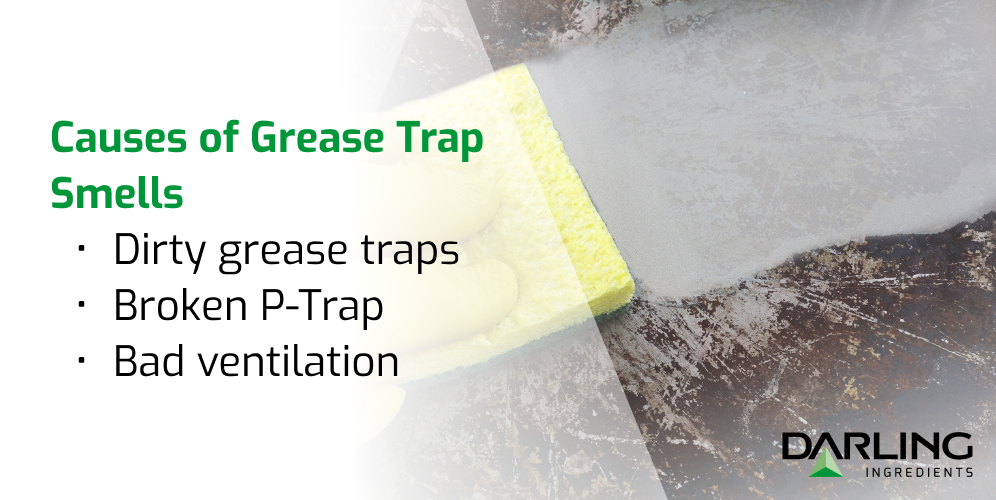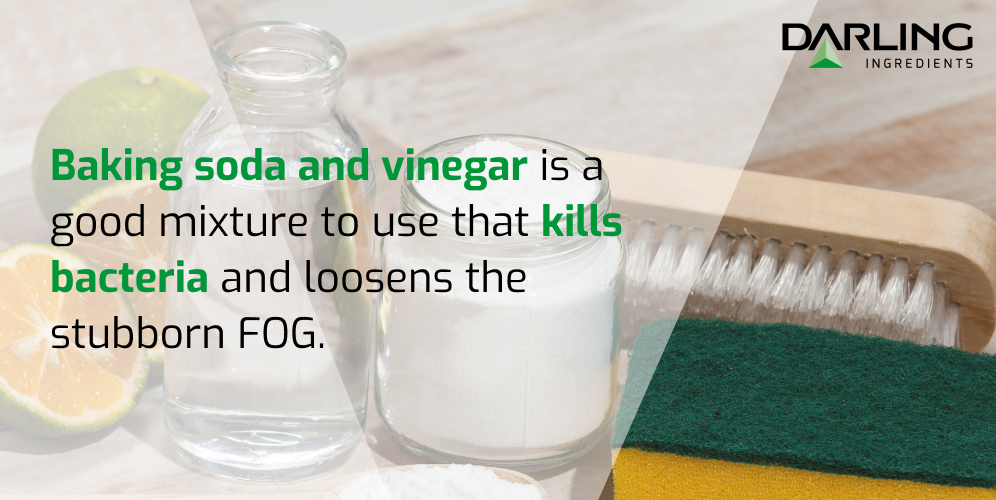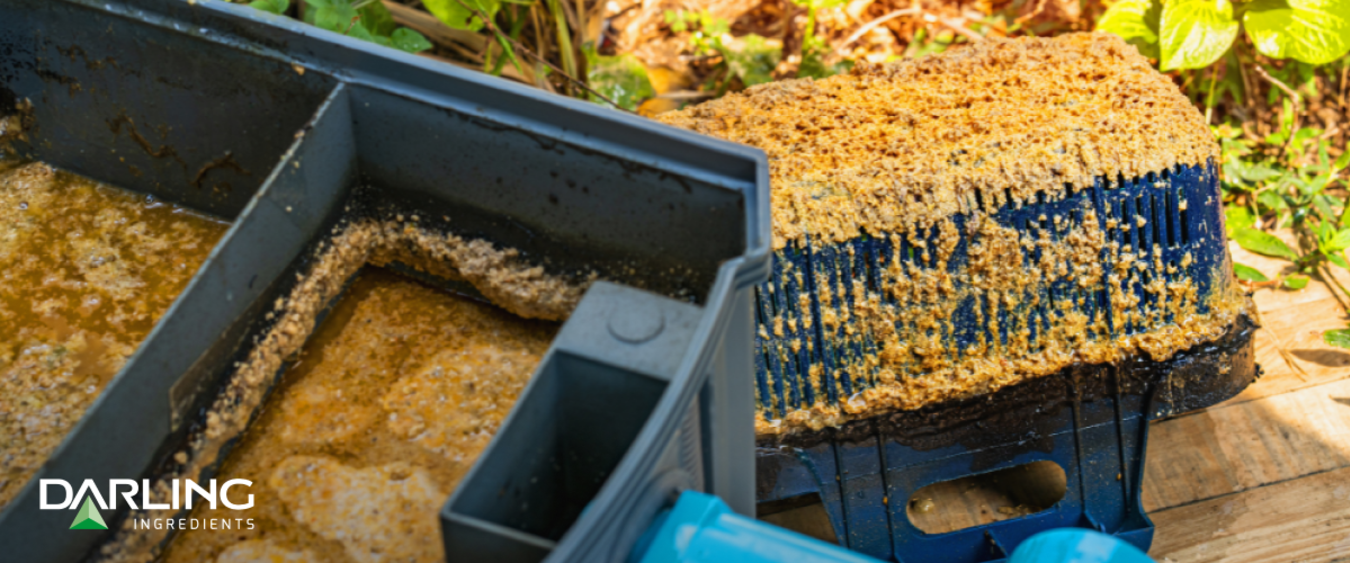If you’re thinking in your head “why does my grease trap smell so bad?” then there’s probably something wrong.
What Causes Grease Trap Smells
There are a few different reasons, or a combination of a few, as to why your grease trap smells. Oftentimes, it involves a blockage or buildup of grease or other organic material somewhere along the route of.

Dirty Grease Traps
Dirty grease traps are so full of fats, oils, and grease (FOG) that those bad odors are backing up into the restaurant or kitchen. Grease traps are meant to catch FOG, but not hold it indefinitely.
When these organic materials break down, they emit sulphuric gases. Not only do sulphur compounds smell, but eventually, they can eat away at the grease trap and the plumbing. So, having a dirty grease trap can have more serious consequences than just a foul odor.
Broken P-Trap
A P-trap is a P-shaped bend in the plumbing. For grease traps, it’s situated between the opening of the grease trap and the actual trap itself.
Water sits in the bend of the pipe and acts as a kind of filter to block foul smells. If the water is too high, the P-trap doesn’t exit and water will not be able to trap the smells.
Bad Ventilation
Outside of your restaurant, you should have a vent for your grease trap. If that vent is blocked or faulty, that smell will start to back up.
Ventilation can also be bad if it is in the wrong location. If the vent is placed near the customers, you may need to relocate it elsewhere.
Fixing Grease Trap Smells
If your grease trap is emitting odors and bad smells, don’t fret. it’s not too late to do something about it. Luckily, it can be reversed.
Clean the Trap
If you’ve fallen off your cleaning schedule, or have been producing more food than normal, your grease trap just might need a good old fashioned clean-out. Start by clearing out the food particles in the trap that are causing the smell.
When you are doing it yourself, send plenty of hot, boiling water down the drain to loosen the FOG that may be caked onto the trap. Once it’s cool enough to touch, pull out the organic matter with your hands. Baking soda and vinegar can also be helpful to kill bacteria and loosens the stubborn FOG.
Check the seals for pipes leading into and out of the grease trap. If a seal is old and cracked, grease trap odors are likely escaping into places you don’t want them to be.
Don’t be afraid of professional plumbing help—grease traps are not just your residential under-the-sink-plumbing.

Fix the Plumbing
Make sure that everything to do with the plumbing in your kitchen and dishpit are functioning and structurally sound. Dealing with FOG is no easy task, so the plumbing needs to be working well in order to do the job that it is meant to do.
Make sure that the ventilation is clear and away from where the customers are.
Preventing Grease Trap Smells
It’s much easier to get ahead of smells than to fix smells later on down the road. Do preventative cleaning and maintenance, and act immediately if you begin to notice smells you don’t want.
Get on a Cleaning Schedule
When FOG sits there and builds up, it is unable to decompose and becomes smelly. Whether you do it yourself or get a professional service, the grease trap needs to be cleaned regularly. How often you need to clean it depends on the capacity of the grease trap and the size of your kitchen.
Send Less Waste Down the Drain
Compost or donate as much food as possible so that it doesn't go down the drain. Scrape off food and residue from plates, silverware, and kitchen equipment before washing them as well to further avoid any unwanted waste in the sink drain.
Get your kitchen a good used cooking oil (UCO) system. UCO containers and systems can connect directly to your kitchen fryers to make dealing with your spent cooking oil and waste products easy.
With the help of a UCO system, you have one less thing to worry about going down the drain.

For More Kitchen Management Tips, Talk to Darling Canada
If you have a restaurant or commercial kitchen, the last thing you want to worry about is backed up plumbing and smelly aromas floating in and out of the building. That’s why Darling Ingredients Canada takes care of the not-so-pleasant by-products of cooking.
In addition to providing UCO systems, we’ll collect used cooking oil and meat by-products to be repurposed responsibly. By using Darling Ingredients Canada, you’re not only removing a messy part of running a kitchen off your plate, but you’re contributing to sustainable waste solutions.
Reach out today to learn more.
